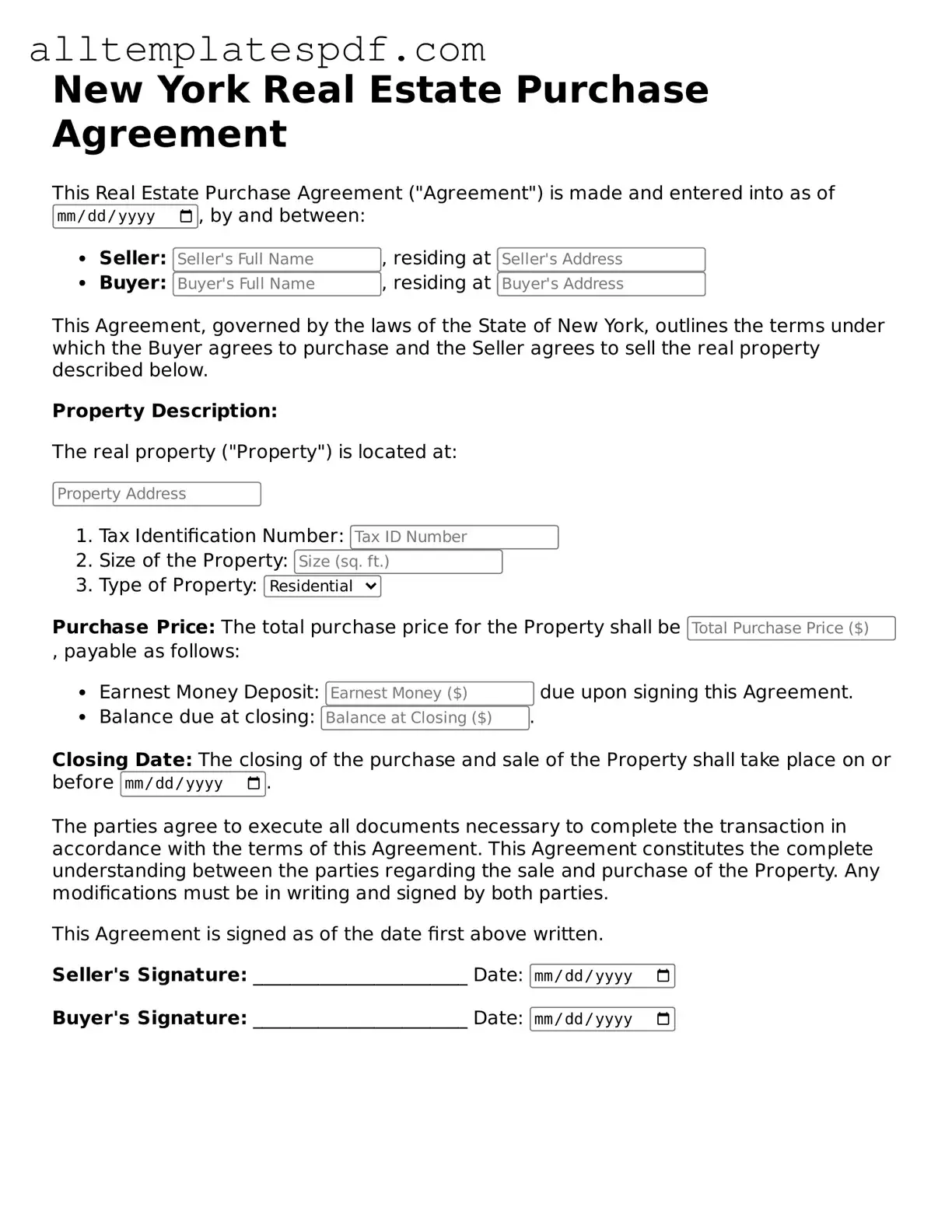Filling out the New York Real Estate Purchase Agreement form can be a complex task. Many individuals make common mistakes that can lead to delays or complications in the transaction process. Understanding these pitfalls can help ensure a smoother experience.
One frequent mistake is not providing accurate property descriptions. Buyers and sellers must ensure that the property’s address, lot number, and any relevant details are correct. Inaccuracies can lead to confusion and potential legal issues down the line.
Another common error involves neglecting to specify the purchase price clearly. This figure should be unambiguous and prominently stated. If the price is unclear, it can create disputes between the parties involved.
People often forget to include contingencies in the agreement. Contingencies are conditions that must be met for the sale to proceed, such as obtaining financing or passing a home inspection. Omitting these can lead to misunderstandings and unexpected consequences.
In addition, failing to sign and date the document is a mistake that can invalidate the agreement. Both parties need to provide their signatures and the date to confirm their acceptance of the terms outlined in the document.
Many individuals also overlook the importance of reviewing all terms and conditions before submission. Each clause in the agreement holds significance. Misunderstanding or skipping over these terms can lead to future disputes.
Another mistake is not providing necessary disclosures. Sellers are required to disclose certain information about the property, such as known defects. Failing to do so can lead to legal ramifications and potential lawsuits.
Finally, not consulting with a legal professional can be a significant oversight. Having an expert review the agreement can help identify any potential issues and ensure that all legal requirements are met. This step can save time and prevent complications later in the process.
